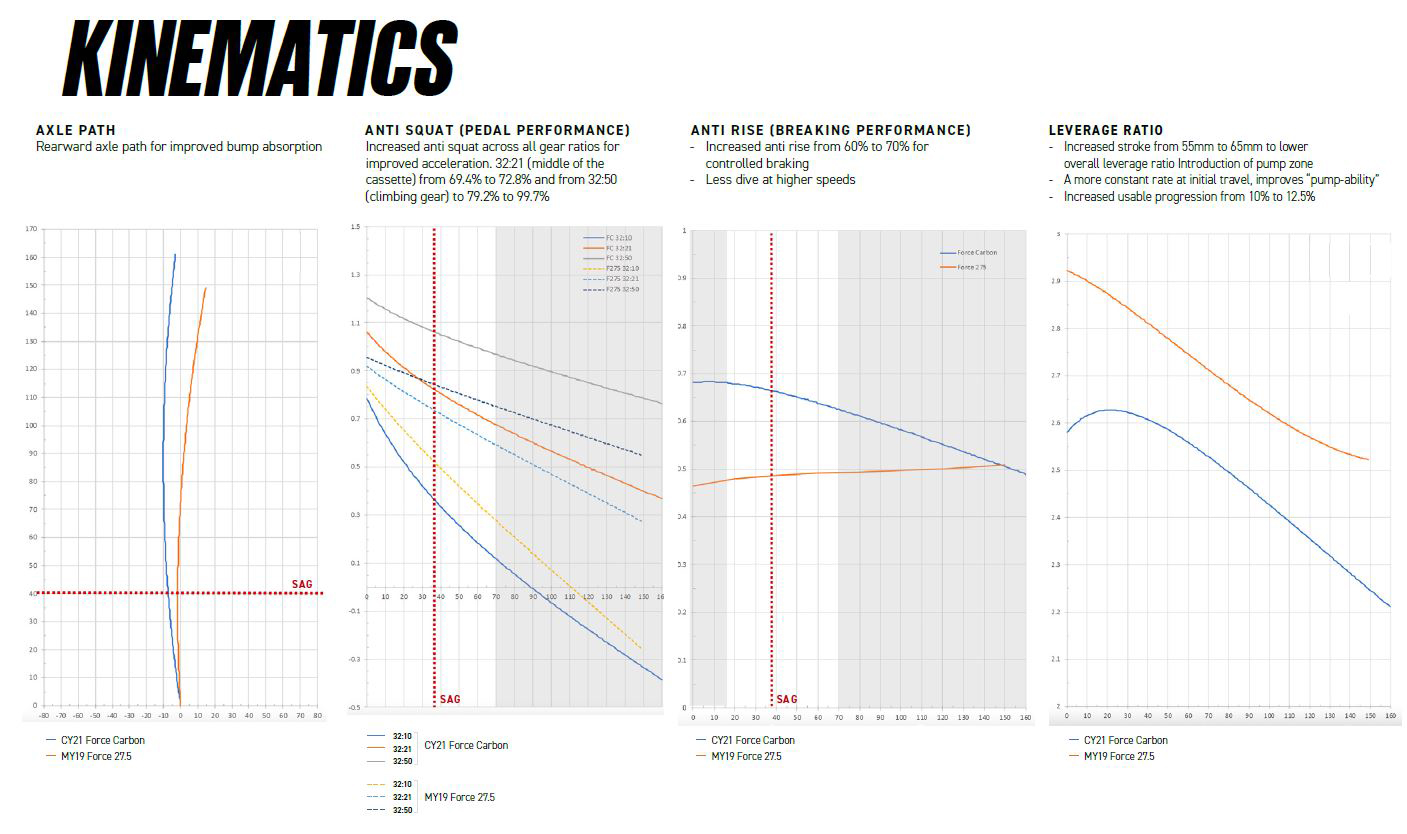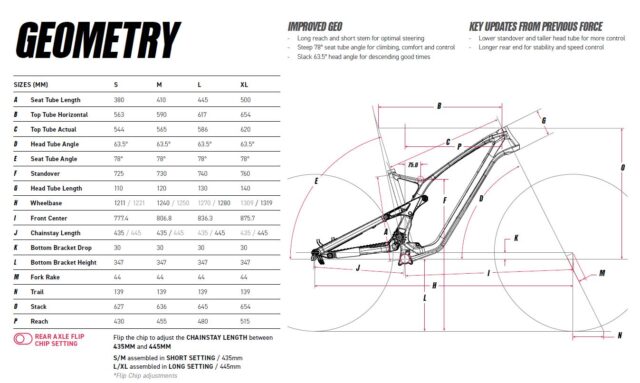2021 GT Force
Wheel Size: 29’’
Travel: 160 mm rear / 170 mm front
Material: Carbon fiber front triangle / aluminum rear
Price:
- Frame w/ Fox Float X2 Factory Shock: $3,300
- Complete bikes $3,800 to $6,000; see below for details
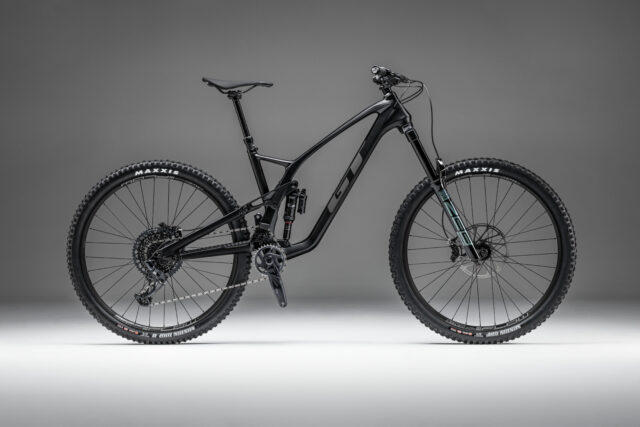
Intro
Cannondale released a major update to their Jekyll Enduro bike a couple months ago, and now GT is following suit with the Force. The two bikes share a ton of similarities — including a high-pivot layout with an idler, and aren’t too far off when it comes to geometry and suspension travel numbers, either. So is this a case where the two sister brands have largely copied each other’s homework, or are there more differences lurking under the surface? And how does the Force compare on paper to the rest of the market? Let’s dig in.
The Frame
The new Force’s suspension layout has some substantial similarities to the new Cannondale Jekyll, though the positioning and actuation of the shock are notably different. They’re both Horst Link designs with a relatively high main pivot and an idler pulley, but the axle path is only somewhat rearward on both. In contrast to bikes like the Forbidden Dreadnought and Norco Range, the axle paths on the Force and Jekyll do start to come forward about half way through travel. One of the main goals of a high-pivot layout is to improve bump absorption by making the axle path more rearward, and thus more able to move up and over square-edged impacts, but it can also make for a bike that feels harder to pump through and pop off things. We’re curious to see how the middle ground approach that GT has taken shakes out on the trail.
The Force features a carbon fiber front triangle paired with an aluminum rear end on all build levels, and it’s got all the standard niceties you’d expect on a modern Enduro bike — ISCG-05 tabs for a chainguide, fully-guided, internally routed cables, a ribbed rubber chainstay guard plus some extra downtube protection, and room for a water bottle inside the front triangle on all sizes. The rear axle is a standard 148 mm Boost affair, the bottom bracket shell is threaded, and GT says the Force’s leverage curve works well with both air and coil shocks. Dual-crown forks aren’t condoned, though.
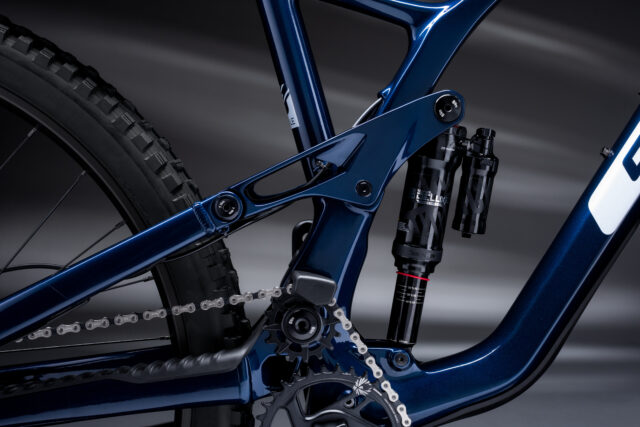
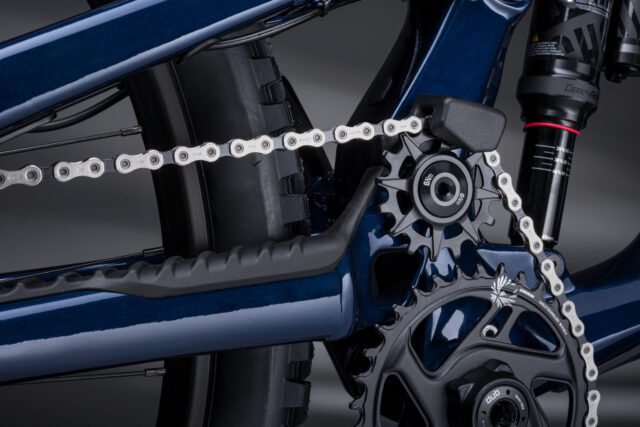
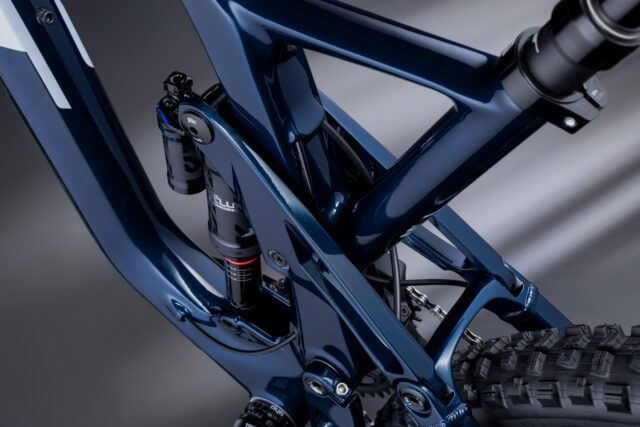

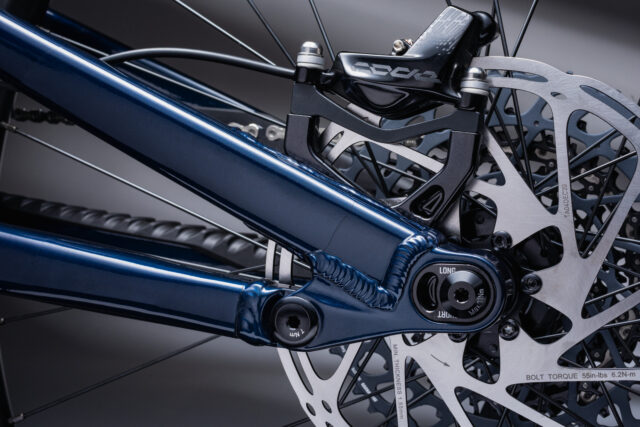
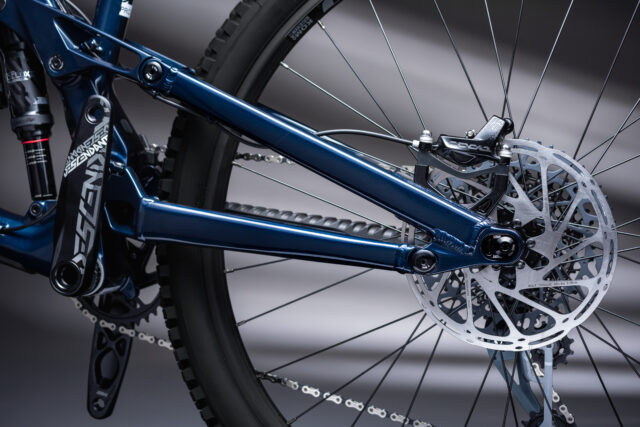
The Force’s leverage curve is indeed fairly progressive, going from about 2.6:1 to 2.2:1 at bottom out. The curve is mostly straight-ish from the sag point onward, but has a slight digressive section at the very start of the curve. That slight digressive section might mitigate small-bump sensitivity just a little bit, but we’re curious to get on one to find out how it all adds up in combination with the high-pivot layout on the Force.
The Cannondale Jekyll has notably low anti-squat numbers for this sort of bike, and while the Force’s are a bit higher — coming in just over 100% around sag in a 32:50 gear ratio, and falling off even lower in higher gears — they’re still a touch lower than average. You can see the graphs for axle path, leverage ratio, anti-squat, and anti-rise below. GT doesn’t publish a pedal kickback graph, but due to the high-pivot and idler layout and overall low anti-squat, we’d expect the Force to have very little.
Also, GT should be commended for publishing anti-squat graphs in multiple gear ratios, and with those ratios labeled. The graphs above nicely illustrate why gearing matters for the purposes of thinking about anti-squat — it varies considerably, depending on gear — and if you’d like a whole bunch more on the subject, check out the Suspension Kinematics section of our Mountain Bike Buyer’s Guide.
Fit & Geometry
As we mentioned up top, the geometry of the Force is quite close to that of the Cannondale Jekyll. The Force’s headtube is 0.5° slacker, at 63.5°, and the seat tube 0.5 ° steeper, at 78°. The reach on the Force is 5 mm longer in all four sizes, ranging from 430 mm on the Small through 515 mm on the XL. The Medium and Large Force clock in at 455 and 480 mm, respectively. Both bikes share a 30 mm bottom bracket drop.
One area where the two diverge is that GT hasn’t quite hopped onto the trend of varying chainstay length by size, but instead include a flip chip in the dropout to alter the chainstay length by 10 mm. Small and Medium frames come with the chip set to 435 mm, whereas Large and XL bikes ship with the chip set to 445 mm, but the two settings are shared across all four frame sizes. Cannondale instead opted for fixed-length stays that range from 430 to 450 mm, depending on size. On the Force, all that adds up to wheelbases that range from 1211 to 1319 mm, depending on size and chainstay length setting. You can see the full geometry chart, below:
The Builds
GT offers the Force as a frame only with a Fox Float X2 Factory rear shock for $3,300, or as one of three complete builds, ranging from $3,800 to $6,000.

- Fork: RockShox Yari RC, 170 mm travel
- Shock: RockShox Super Deluxe Select
- Drivetrain: SRAM SX Eagle
- Crankset: Truvativ Descendent 6K
- Brakes: TRP Slate T4, 203 mm rotors
- Wheels: WTB ST i29 rims / Formula hubs
- Dropper Post: GT Dropkick (S: 125 mm; M: 150 mm; L/XL: 170 mm)
- Fork: RockShox ZEB Select+, 170 mm travel
- Shock: RockShox Super Deluxe Select+
- Drivetrain: SRAM NX Eagle
- Crankset: Truvativ Descendent 6K
- Brakes: SRAM Code R, 220 / 200 mm rotors
- Wheels: WTB ST i29 rims / Formula hubs
- Dropper Post: GT Dropkick (S: 125 mm; M: 150 mm; L/XL: 170 mm)
- Fork: RockShox ZEB Ultimate, 170 mm travel
- Shock: RockShox Super Deluxe Ultimate
- Drivetrain: SRAM GX Eagle
- Crankset: Truvativ Descendent 7K
- Brakes: SRAM Code RSC, 220 / 200 mm rotors
- Wheels: WTB KOM i30 rims / Formula front, SRAM MTH746 rear hubs
- Dropper Post: Tranz X +Rad (S: 150 mm; M: 170 mm; L/XL: 200 mm)
Some Questions / Things We’re Curious About
- On paper, the new Force looks very similar to the new Cannondale Jekyll. Is this a case where two sister brands have wound up selling bikes that functionally are very comparable under both labels, or are there more differences that appear on the trail?
- How does the mid-pivot arrangement on the Force (and Jekyll) stack up to bikes like the Forbidden Dreadnought that use a much higher pivot and consequently more rearward axle path?
- How versatile does the Force feel as an everyday trail bike, or is it a game-on Enduro race bike first and foremost?
Bottom Line (For Now)
High-pivot bikes are really having a moment, and GT has now thrown their hat into the ring with the new Force. We’re excited to get on one to figure out how it stacks up to the rest of the class, including the Forbidden Dreadnought and Cannondale Jekyll, as well as the more conventional competition. We should be getting on a Force shortly, so stay tuned for a full review to come.

